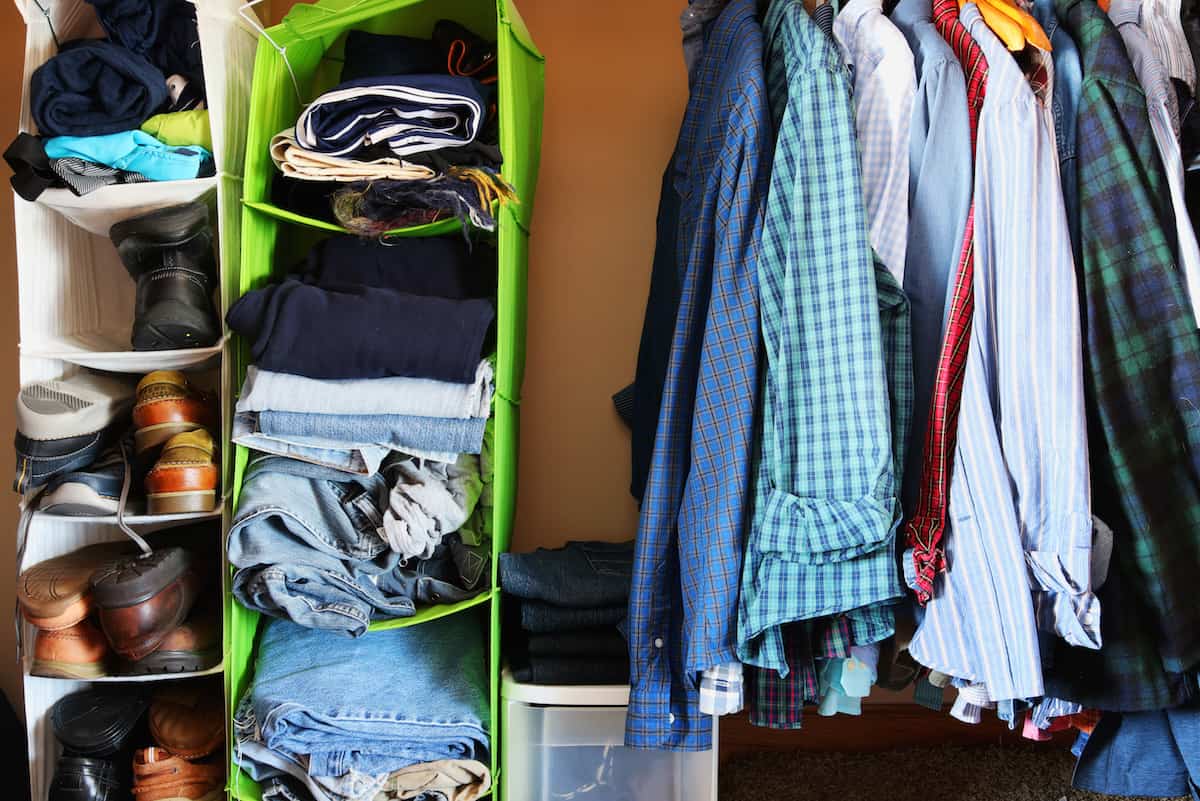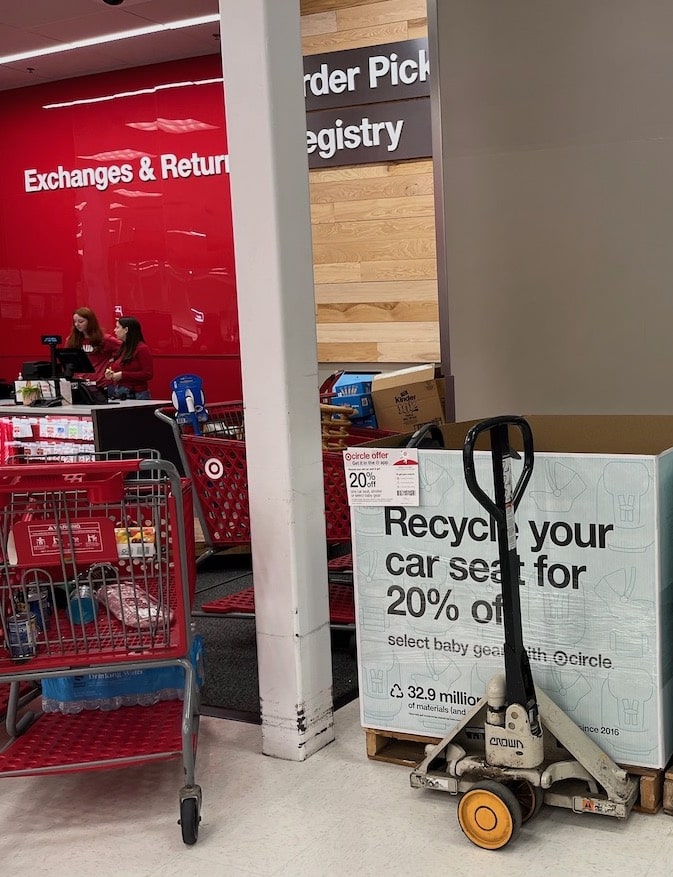Clutter’s Dirty Little Secret
Bulging closets, towering boxes, jammed drawers: who hasn’t experienced clutter in one form or another? Clutter is usually perceived as a visual eyesore, but it can also take a serious toll on your mental health. Keep reading to learn about the emotional benefits of a clutter-free home and the realistic strategies you can use to begin your decluttering journey.

The psychological impact of clutter
Take a scroll through TikTok: do the homes of your favorite influencers have anything in common? Whether you’re watching home renovations or cooking videos, the houses depicted are usually spacious, sparkling clean and completely clutter-free. If you feel like this sets an impossible standard, you’re not alone. In a world obsessed with appearances, clutter is a taboo subject. It can feel shameful to have a messy, less-than-perfect home.
Feelings of guilt and embarrassment often make decluttering seem like an intimidating project. Do you want to seek support from friends and family but feel too worried about what they may think? Clutter shouldn’t be a source of humiliation, but it often is.
As your clutter builds up, your general satisfaction with life may suffer, according to a 2017 study. Professors Catherine A. Roster of the University of New Mexico and Joseph R. Ferrari of DePaul University explored how procrastination contributed to clutter. The study surveyed three adult groups and found that procrastination facilitated clutter. Clutter, in turn, was associated with a lower satisfaction with life in older adults.
Clutter doesn’t just take up needed space. It also creates negative emotions. Those negative emotions make it more difficult to implement decluttering strategies, perpetuating a vicious cycle.
The takeaway? Tackling clutter can take a lot of bravery, but a messy home isn’t a personal failure. Looking objectively at clutter may make it easier to break out of the cycle of negative emotions.
Benefits of a clutter-free home
Decluttering can be difficult, especially if you have to let go of sentimental items, but the payoff is worth it. “When our living or working space is organized and clutter-free, our mind can feel more at ease,” explains Sal Raichbach, a Doctor of Psychology and Licensed Clinical Social Worker based in Palm Springs, Florida.
If you’ve ever spent ages digging in your closet in search of that one pair of jeans, then you’ll know what Raichbach is talking about. In a clutter-free home, you don’t need to waste time and energy moving around distractions. As Raichbach puts it, a tidy space “creates a sense of calm and order, allowing us to focus better and be more productive with our tasks.”
You can immediately find what you need when objects aren’t scattered everywhere. For example, a relaxing salt scrub bath is far less relaxing when your salt scrub might be hiding anywhere in the living room, medicine cabinet, nightstand or kitchen drawer.
Save this article and we’ll send it to your inbox. Plus, we’ll send you more great links each week.
Raichbach suggests creating designated storage spaces for items. “When everything has its designated place, we can easily find what we need and feel a sense of control over our environment.”
More than a decade ago, I wrote an article about how being organized saves you money. At that time I was following the FlyLady principles. It all still makes sense today.
Strategies for managing clutter at home
Out of the countless decluttering strategies out there, which ones actually work? Test out these three methods to see which one best fits your lifestyle.
The KonMari method
The queen of decluttering, professional organizer and consultant Marie Kondo, suggests asking, “Does it spark joy?” about each object in your home. An object that sparks joy should be kept around. If something no longer sparks joy, it’s time to let it go.
As Kondo’s website explains: “Joy is personal, so everyone will experience it differently.” You might feel joy sitting down to a delicious chicken dinner with your family. A beloved t-shirt might spark joy, even if it no longer fits. That uncomfortable pair of shoes, on the other hand, might not spark joy. Kondo suggests parting from items that do not spark joy with respect and gratitude.
The four-box method
As you decide what to do with unneeded items, it can be helpful to use the four-box method. Gather four boxes, reusable bags or other containers. Give them each a unique label: donate, relocate, trash, and keep.
First, set apart things to donate. Thrift stores, shelters and community giveaway groups are all great options for donations. Then, consider what to relocate inside your home. For example, is your medicine cabinet crowded with too many beauty products? Consider moving the items you use once a year — looking at you, nose strips — into a drawer.
Next, what can you dispose of? Are you hanging onto magazines you won’t ever read, or a broken diffuser? Recycle junk mail, drop off broken electronics according to local guidelines and put other items in the trash. Don’t feel guilty about saying goodbye.
Finally, if an item truly sparks joy, keep it around. As you sort through the items, you’ll feel accomplished when the boxes fill up.
Don’t let that giveaway box linger too long, though. Schedule a time to donate unwanted items as soon as possible. If getting to the thrift store feels impossible, ask a friend to come along for moral support. Or, treat yourself to coffee and a pastry once you’re done.
Also, look for stores or brand that offer clothing buy-back programs. They’ll take back your old clothing to recycle them, and give you money off new clothing. That’s a win-win.
Do you have old car seats lying around the house or cluttering up your basement, garage or attic? Take advantage of the Target car seat recycling program. It happens every year around the same time as Earth Day.

Mini-decluttering
Also known as resetting to zero, mini-decluttering is an excellent way to take control of clutter. It’s almost as easy as making chip dip and won’t take long. Walk through your home and address anything that seems out of place. Dirty laundry should go in the hamper, used dishes should go in the sink and any miscellaneous items should be put back in their proper places.
Mini-decluttering may initially feel like a chore. Over time, however, the visual appeal of a tidy and orderly home will become its own reward.
Embracing a new era of clutter-free living
While some degree of messiness is a normal part of human life, clutter shouldn’t stop you from enjoying your home. Understanding clutter’s dirty little secret — its negative psychological effects — is the first step to organizing a chaotic space.
Also, every time I say clutter’s dirty little secret, I hear the All-American Rejects’ song “Dirty Little Secret” in my brain. You, too? Anyway, back to the topic at hand.
A home that is crowded with unneeded items can contribute to negative feelings such as stress, anxiety and guilt. On the other hand, a clutter-free home can provide significant psychological benefits of peace and tranquility.
If you want to reclaim your home and your mind from a mess of clutter, these strategies are a great place to start. The decluttering journey doesn’t have to be intimidating. Transformation can begin with one small, single step. After all, your home isn’t for your stuff. It’s for you.
This article originally appeared on Food Drink Life.
